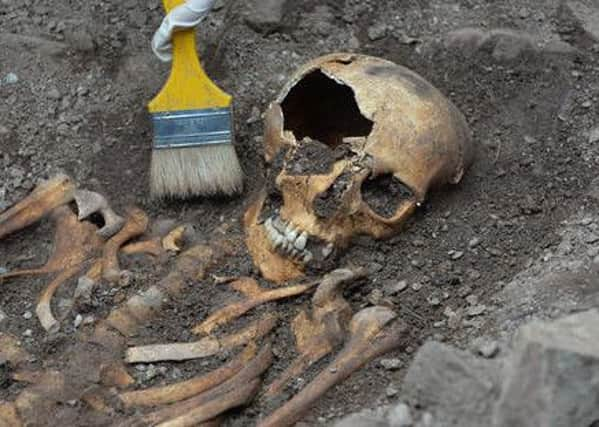Human remains found at Hillsborough Castle


Members of the public helped unearth the remains found in a burial ground on the first day of the dig undertaken by Historic Royal Palaces, the independent charity that cares for Hillsborough Castle, and Northern Archaeological Consultancy.
Volunteers uncovered the ancient burial ground within the historic gardens thought to be connected to an early medieval church which once stood on the site.
Advertisement
Hide AdAdvertisement
Hide AdArchaeologists had been working to uncover Hillsborough Castle’s history and members of the public were invited to join the dig to discover what lies beneath the historic gardens.
More research and analysis of the finds need to be carried out, but early indications suggest the burial ground could pre-date a medieval church. Slate roof tiles and nails were also discovered as well as mortar which archaeologists say indicate the site of the medieval church but could also be signs of a settlement in Hillsborough before the Georgian village that exists today.
These discoveries, together with old maps of the area, also appear to suggest that people were using the grounds long before the castle and its gardens were created.
Hillsborough Castle, a Georgian country house, was built in the 1780s and is undergoing a major transformation to introduce an education centre. The house was built for the Hill family, Marquesses of Downshire, owned it until 1922, when the 6th Marquess sold the mansion and its grounds to the British government.
Advertisement
Hide AdAdvertisement
Hide AdRosanagh Fuller, Learning and Engagement Producer for Historic Royal Palaces, said: “We are delighted that over 300 volunteers have been able to help us uncover more of the site’s history. It has been extremely exciting to discover such important finds and we look forward to telling visitors about this.
Archaeologist Jonathan Barkley told UTV: “It is interesting, the layout suggests an earlier burial style and there are other trenches now producing finds such as coffin handles which the skeleton itself doesn’t seem to have any association with, so there are several phases of burial on the site.”